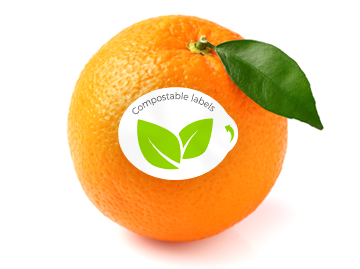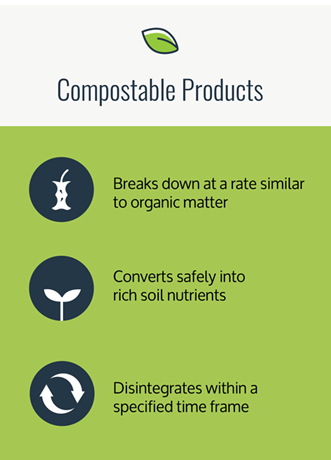Seeking a truly sustainable PLU sticker
 By M. Scott Howarth, PhD., Director of Research & Development
By M. Scott Howarth, PhD., Director of Research & Development
 In recent years, there’s been a lot of discussion throughout the fresh produce industry – and the world – about sustainable packaging and “going green.” The fresh produce industry needs packaging and it serves a purpose, from building brand identity to making it easier for stores to scan produce; fresh fruit and vegetable packaging can showcase both brand and important product information.
In recent years, there’s been a lot of discussion throughout the fresh produce industry – and the world – about sustainable packaging and “going green.” The fresh produce industry needs packaging and it serves a purpose, from building brand identity to making it easier for stores to scan produce; fresh fruit and vegetable packaging can showcase both brand and important product information.
A fruit label is one of the smallest packaging methods available. The functional information a label holds provides many benefits to consumers, the supply chain and retailers. The information displayed ensures consumers can make informed choices when purchasing fresh fruit and vegetables. Barcoding helps supply chain with traceability and helps minimize the potential for food waste. Barcoding and PLU (Price Look Up) codes also helps retailers ensure checkout is fast and efficient by preventing ‘miss-rings’ of loose products. Then of course you have the small ‘footprint’ of the label, it negates the need for the overuse of packaging; this can help reduce the use of plastic, particularly if a plastic free and/or bio-based label construction is applied.
At the forefront of sustainable fruit and vegetable labels
Since the early 2000s, Sinclair has been investing in new technologies to ensure sustainable fruit and vegetable labels are available to the industry. Currently, there’s no “one-size-fits-all” home compostable fruit label available. Sinclair is proud to be leading innovation in this respect by offering ‘OK compost’ certified fruit labels via the compostable PLU sticker range. The range includes a home compostable and industrial compostable label option.
By using independent testing and certification of the results, our aim is to provide transparency and peace of mind on how our products perform and impact the environment when disposed of for composting.
What is meant by 'compostable' and 'biodegradable'? Are they different?
 With the push for more sustainable products, almost on a daily basis, we encounter spin and buzz around words like ‘biodegradable’, ‘industrial and home compostable’ and ‘recyclability’. It can be confusing but have you ever wondered what these words really mean in relation to environmentally friendly products?
With the push for more sustainable products, almost on a daily basis, we encounter spin and buzz around words like ‘biodegradable’, ‘industrial and home compostable’ and ‘recyclability’. It can be confusing but have you ever wondered what these words really mean in relation to environmentally friendly products?
Let’s start with biodegradable – it actually has a very simple definition. Biodegradable products must return to nature, disintegrating or disappearing completely. A biodegradable product may be broken down by microorganisms, but this does not necessarily imply that the product can be converted into a soil-nurturing compost. This disintegration is not necessarily bound by time and does not need to enhance quality. Metallic or toxic residue from materials can often be released in the return-to-nature process and is still considered part of biodegradation.
What about compostable? If something is compostable, it can be broken down by natural processes into non-toxic components within a certain period of time. To truly know if something is compostable, it needs to be tested and certified by a third party supplier. In short, something that is compostable is biodegradable – but not everything that is biodegradable is compostable.
So what’s the difference between industrial compostable and home compostable? Both types of composting create a nutrient-rich compost at the end of the process. Industrial composting ensures rapid biodegradation via a multi-step, closely monitored process in industrial composting facilities at temperatures between 55 to 60⁰C. This process occurs over a period of months. Home composting means the product can be disposed of in a home compost environment and will biodegrade into usable compost within 365 days. Compost position, location, temperature and other factors will influence the speed of biodegradation into usable compost.
Is it possible to have food-safe labels made from recycable materials?
First let’s explore what is meant by recyclable. According to the U.S. Federal Trade Commission (FTC), a product or package should not be marketed as “recyclable” unless it can be collected, separated, or otherwise recovered from the waste stream through an established recycling program. These are pretty tall orders and require packaging designers and manufactures to not only consider the materials it is using but also the life cycle of the product or packaging and especially the end-of-life scenario.
Now, considering if recycled materials can be used to manufacture food-safe labels is a complex question. There are really two primary concerns – first, is the recycled material food-safe and second, is the functionality the same as the virgin material?
The FDA which regulates food contact materials is concerned with contaminates from the post-consumer recycled (PCR) materials that may appear in the final food-contact product and is also concerned that PCR materials may not be regulated for food-contact use and therefore may be inadvertently incorporated into a food-contact product. As a result, FDA considers each proposed use of recycled materials on a case-by-case basis.
So, is it possible to recycle food-safe labels? Yes. However, is it the right thing to do, and could you market it against the U.S Federal Trade Commission’s criteria? Probably not. How do we collect and separate these labels from other recyclable materials?
In closing...
Clearly a one size fits all solution is elusive and many different terms are used in many different publications. Therefore, it is important to carefully evaluate the facts, ignore the myths and look for independent verification and certification against stated claims.
Discover compostable fruit labels: Hand labels and high-speed compostable fruit label.
Back to News & Events